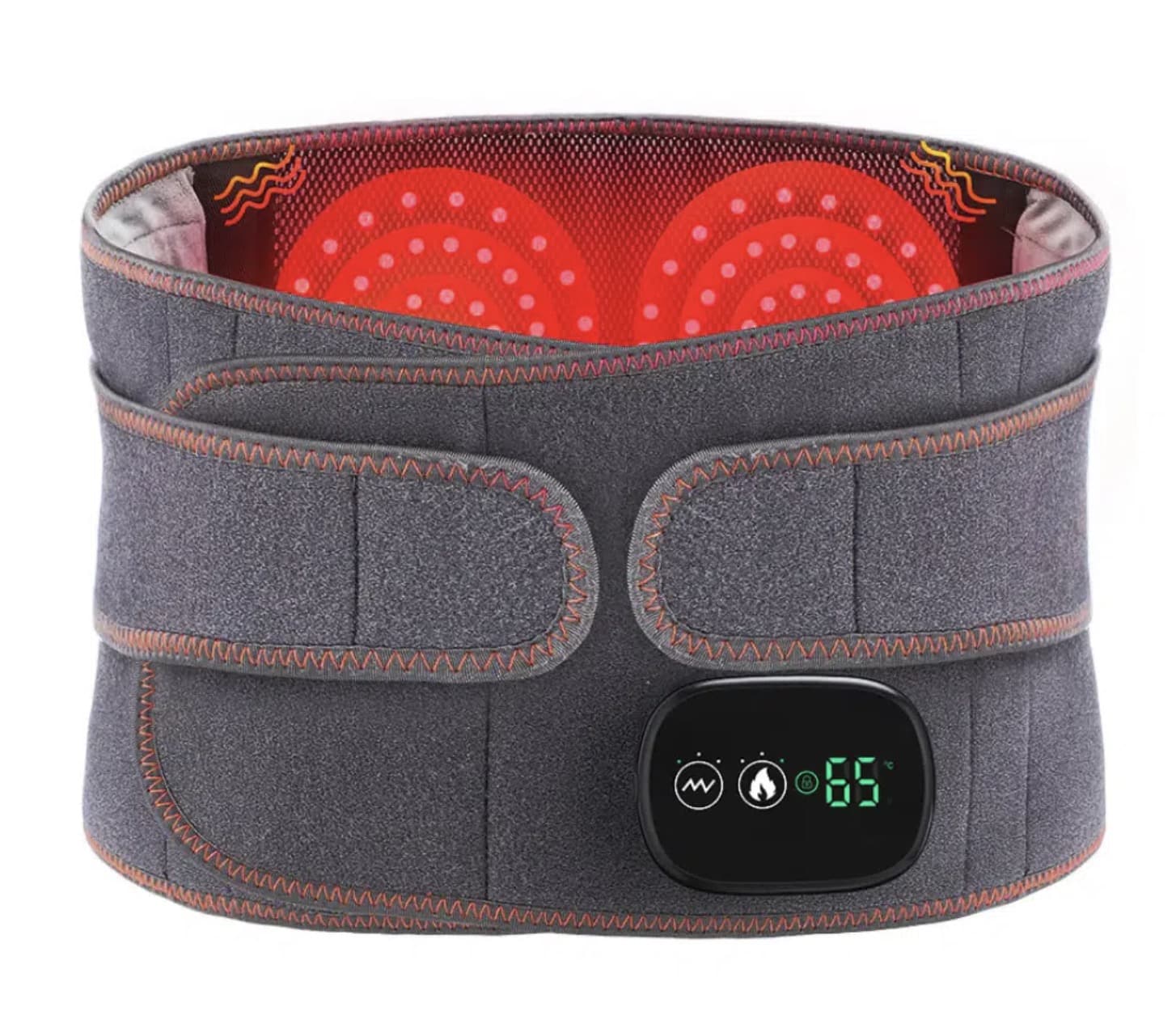As a health expert with a keen interest in innovative, non-invasive pain management tools, I am constantly searching for effective solutions to chronic musculoskeletal issues. Recently, I had the opportunity to extensively test the Hatch Belt—a wearable device that integrates thermotherapy, massage therapy, and red light therapy to relieve back pain. Over several weeks of daily use, I meticulously cataloged its features, performance, and overall impact on my well-being. In this detailed review, I’ll share my personal experience as both a clinician and a user, highlighting why I believe the Hatch Belt deserves serious consideration from anyone seeking relief from back discomfort.
Table of Contents
Unboxing, Design, and Initial Impressions
The Hatch Belt arrived in minimalist yet sturdy packaging, with all components safely secured. The belt itself immediately impressed me with its light weight, modern appearance, and thoughtful engineering. It fits comfortably around the waist with an adjustable strap, accommodating different body types and allowing for secure placement over the lumbar region. The digital control interface is intuitive; settings for heat, vibration, and red light are clearly labeled, making it easy to customize therapy modes even on the first try.
Unlike bulky back braces or wired massagers, the Hatch Belt feels unobtrusive—a crucial factor for prolonged use at home or work. The soft fabric and ergonomic contours ensure it doesn’t chafe or restrict movement, and the built-in rechargeable battery means portability isn’t an afterthought.

Core Features and Clinical Foundations
As I delved into the technical aspects, I was pleased to see that the Hatch Belt applies three therapies with strong clinical pedigrees:
-
Thermotherapy: The integrated heating plates offer adjustable warmth, ranging from 45°C to 65°C, which is optimal for enhancing blood flow and relaxing muscle fibers. Heat therapy is endorsed by physiotherapists for managing muscle spasms and reducing joint stiffness.
-
Massage Therapy: Dual vibration motors provide variable massage rhythms and intensities. I found the vibration gentle yet effective, yielding tangible relaxation of the paraspinal muscles. The belt allows easy toggling between massage cycles to target different discomfort patterns.
-
Red Light Therapy: Near-infrared light (at approximately 750nm) penetrates deeply, fostering cellular repair and reducing inflammation. This modality is supported by emerging research for its role in promoting tissue healing and easing chronic pain, and it’s notable that the Hatch Belt adapts technology originally developed for NASA.
Each feature is impactful on its own, but the true value of the Hatch Belt lies in their synergy. By delivering these therapies concurrently, it tackles pain from multiple angles—thermally calming muscle spasms, physically massaging away knots, and photobiologically accelerating recovery.
First Week: Immediate Effects and Adaptation
During my first week, I wore the Hatch Belt for two sessions daily—once in the morning and once before sleep, each about 30 minutes. My baseline discomfort stemmed from muscular tension after prolonged desk work. After the initial session, I noticed a rapid soothing effect; the gentle heat and vibration collectively melted away stiffness in my lower back.
A standout observation was that pain relief often began within 15–20 minutes of use—substantially faster than over-the-counter topical creams or oral analgesics. The red light therapy brought subtle but unmistakable improvement: areas of chronic tightness felt less rigid, and I awoke the next morning with noticeably increased flexibility in my lumbar spine.
Continued Use: Enhanced Mobility and Recovery
With continued daily application, the Hatch Belt became an indispensable part of my wellness routine. I started integrating it into post-exercise recovery, particularly after long hikes or strengthening workouts. Consistently, it provided marked relief from post-exertional soreness, boosting my ability to stay active without fear of muscle fatigue or flare-ups.
I particularly appreciated the versatility and portability. Whether working from home, traveling, or doing light exercise, the Belt was easy to use in any setting. The battery held up impressively, offering several sessions per charge—a testament to smart design tailored for modern lifestyles.
Clients and patients with back complaints often ask me for practical self-care recommendations. I can affirm, based on my hands-on experience, that the Hatch Belt presents a compelling option for those with chronic or episodic discomfort from muscle tension, sciatica, or minor back injuries. Its gentle therapies were well tolerated, with no adverse reactions such as skin irritation or overheating, even during extended use.
Scientific Rationale and Safety
From a clinician’s perspective, the Hatch Belt excels by combining well-established modalities. Heat increases circulation and speeds healing, vibration relieves deep tissue tension, and red light therapy is known to trigger beneficial biological processes. The Belt avoids drugs, injections, and other invasive techniques, reducing risk and side effect profiles.
Moreover, the device’s safety features—accurate temperature controls, soft padding, and auto-off timers—ensure that both novice and experienced users can safely enjoy its benefits. For individuals seeking to avoid medication, the Belt offers a sustainable alternative grounded in physical therapy principles.
Limitations and Considerations
While my experience with the Hatch Belt was overwhelmingly positive, a balanced review must acknowledge some limitations:
- It is not a replacement for medical evaluation or treatment of severe injuries, spinal pathology, or systemic illness.
- The product is typically not covered by insurance, as it’s considered alternative/complementary therapy.
- Some people may prefer stronger massage or heat than the Belt provides, though I found its settings adequate for most needs.
Final Verdict: Is the Hatch Belt Worth Buying?
After weeks of rigorous testing as both a health professional and a user, I can confidently recommend the Hatch Belt to anyone in need of a convenient, multi-modal solution for back pain and muscular discomfort. The device delivers fast, gentle relief, promotes flexibility and recovery, and empowers users to manage their symptoms proactively without medication dependency.
Its thoughtful engineering, ease of use, and scientifically grounded modalities set it apart from run-of-the-mill massagers and heat packs. For busy individuals, athletes, office workers, or anyone dealing with daily aches, the Hatch Belt is a worthwhile investment. It has earned a permanent place in my wellness toolkit, and I consider it well worth buying for the tangible improvement in comfort, mobility, and quality of life it can provide.

Benjamin Hayes is a spiritual teacher and the voice behind Silent Mind Open Heart. Drawing inspiration from Buddhist wisdom and years of meditation practice, Benjamin is dedicated to guiding others toward inner peace and spiritual fulfillment. Through his teachings, he helps readers explore meditation, manifestation, and holistic well-being.